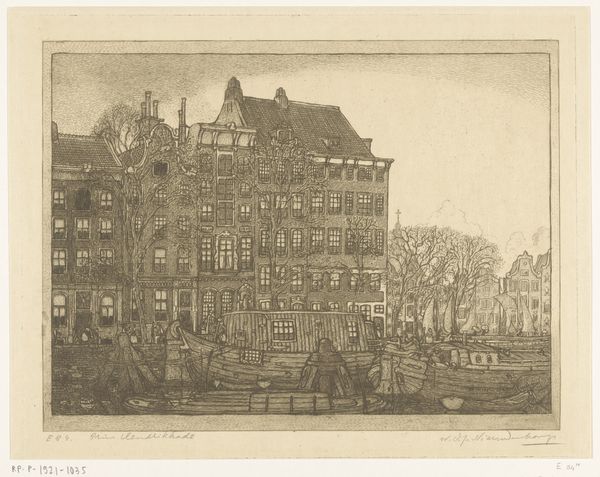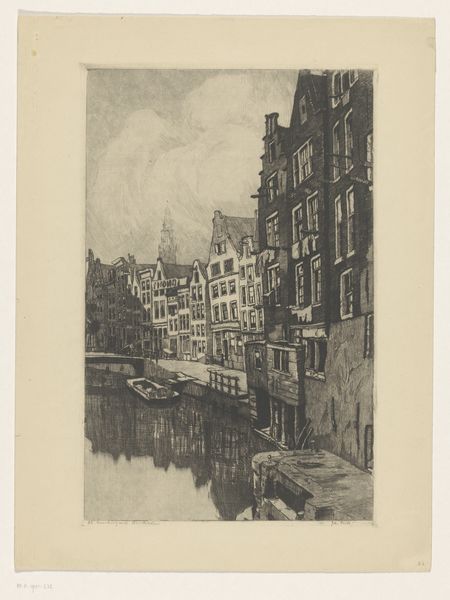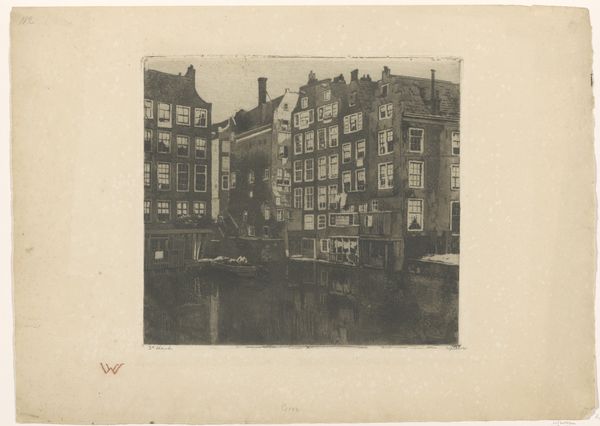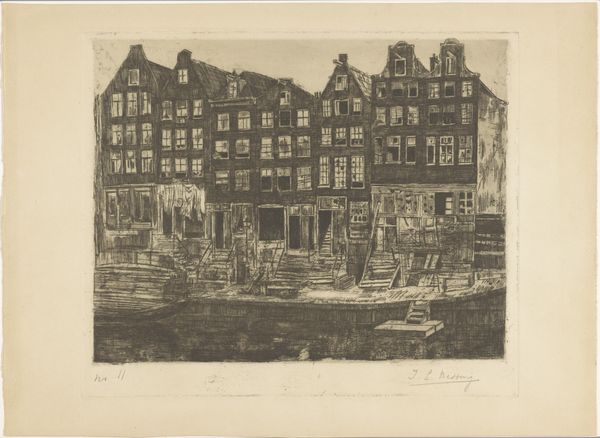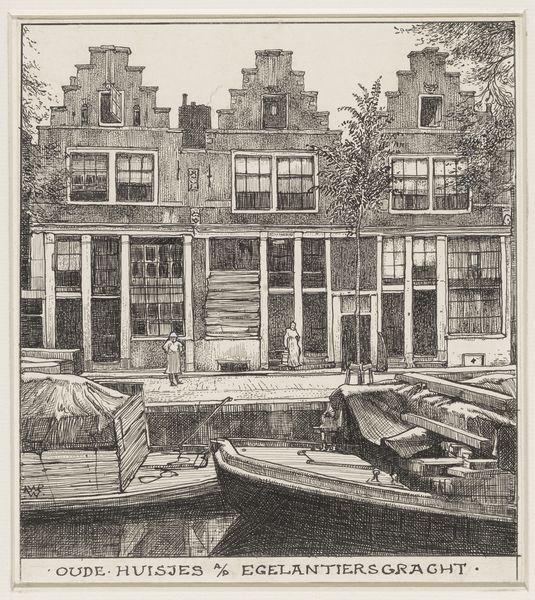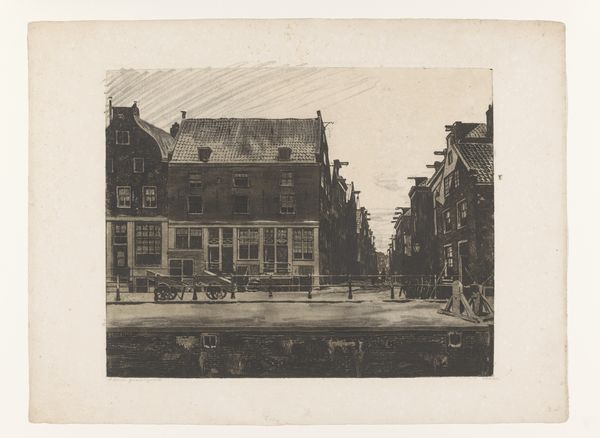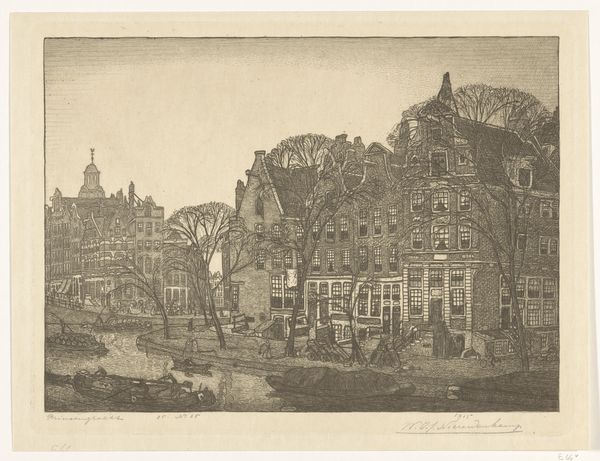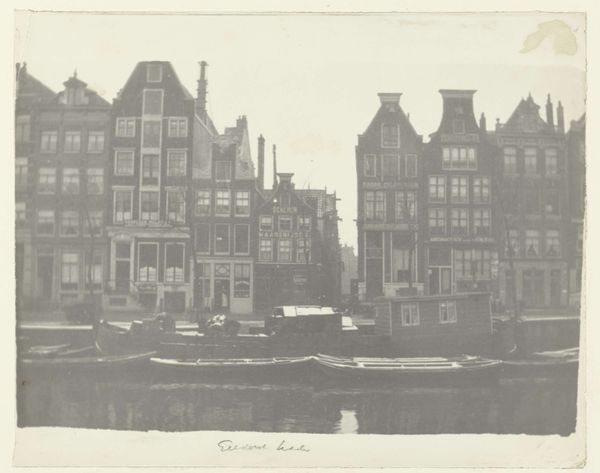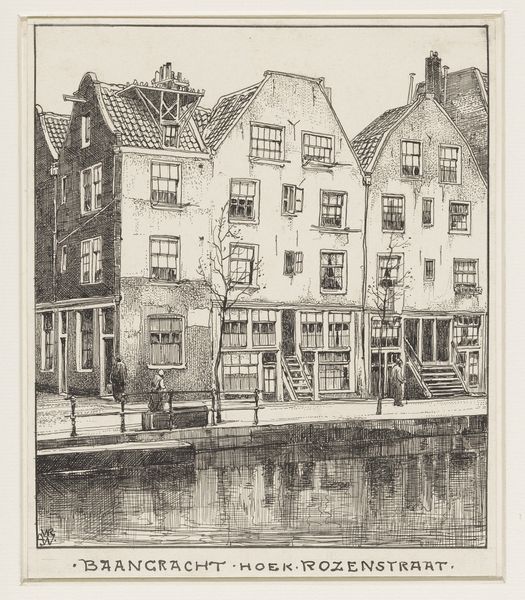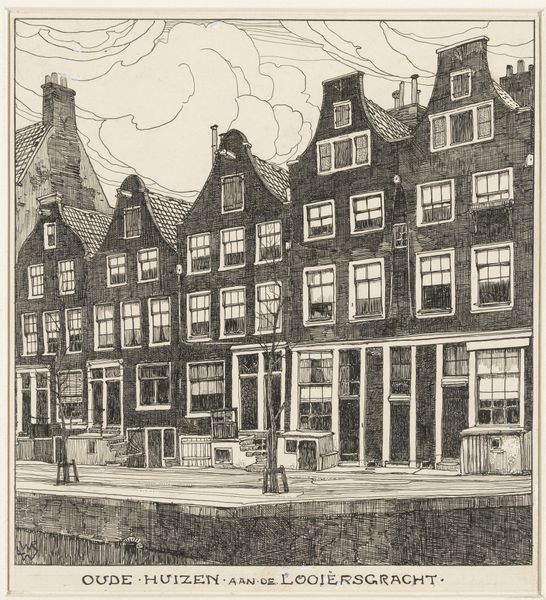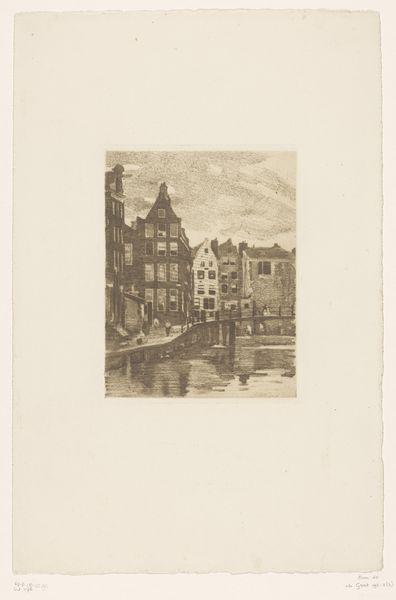
print, etching
# print
#
etching
#
landscape
#
cityscape
#
realism
Dimensions: height 250 mm, width 195 mm, height 351 mm, width 265 mm
Copyright: Rijks Museum: Open Domain
Curator: What a lovely etching! This cityscape, "Stadsgezicht," made before 1935, is by Anna Elisabeth Batelt. It presents a serene view of Amsterdam. What’s your initial reaction to it? Editor: Stark, almost… industrial in its precise, repetitive lines. The dense etching technique feels very labour-intensive; it conveys a sense of mass production and a certain kind of controlled gloom, doesn't it? You feel the hand, and you think about what creating all these small intricate details meant at that time. Curator: It certainly captures a mood. Look at the way Batelt renders the buildings with their many windows. The reflections on the water are subtle, suggesting a mirror to human life and industrious activity. Windows often act as visual metaphors of consciousness, illuminating lives within the buildings. Editor: The material constraints of printmaking likely influenced the limited tonal range, pushing the artist to use sharp contrast to describe these buildings. It makes you consider how accessibility affects circulation, consumption, and cultural values, and perhaps lends some insight to the cultural memory of pre-war life in Europe. What were the processes that created such images, how were they distributed and consumed? Curator: Indeed. Batelt skillfully employs the etching needle to reveal form. The bare tree on the right becomes a symbol of enduring life even in a confined, urban space. What story do you see in it? The tree, boat, the church’s spire rising up? Editor: The material itself speaks of accessibility, of wider markets perhaps than paintings alone allowed. But I can't help but feel its coldness, how the industrialization of image making transforms into how it may have represented daily experience. I wonder how its context informed or deformed these perspectives. Curator: A really keen insight! So, "Stadsgezicht," prompts a rich reflection on time, place and materiality, inviting us to interpret urban experience and the symbols held by each building, the spire, the vessel—a kind of visual poem about industrial Amsterdam. Editor: Agreed, examining its materials helps to interpret its impact then and now. It highlights not only aesthetic choices but social values. A fascinating example of materiality informing how history and culture were captured in print.
Comments
No comments
Be the first to comment and join the conversation on the ultimate creative platform.
